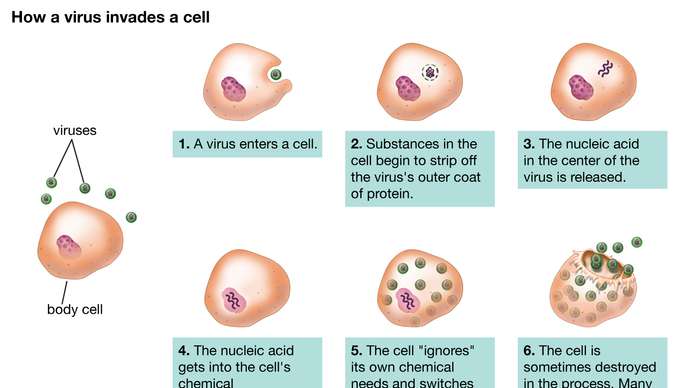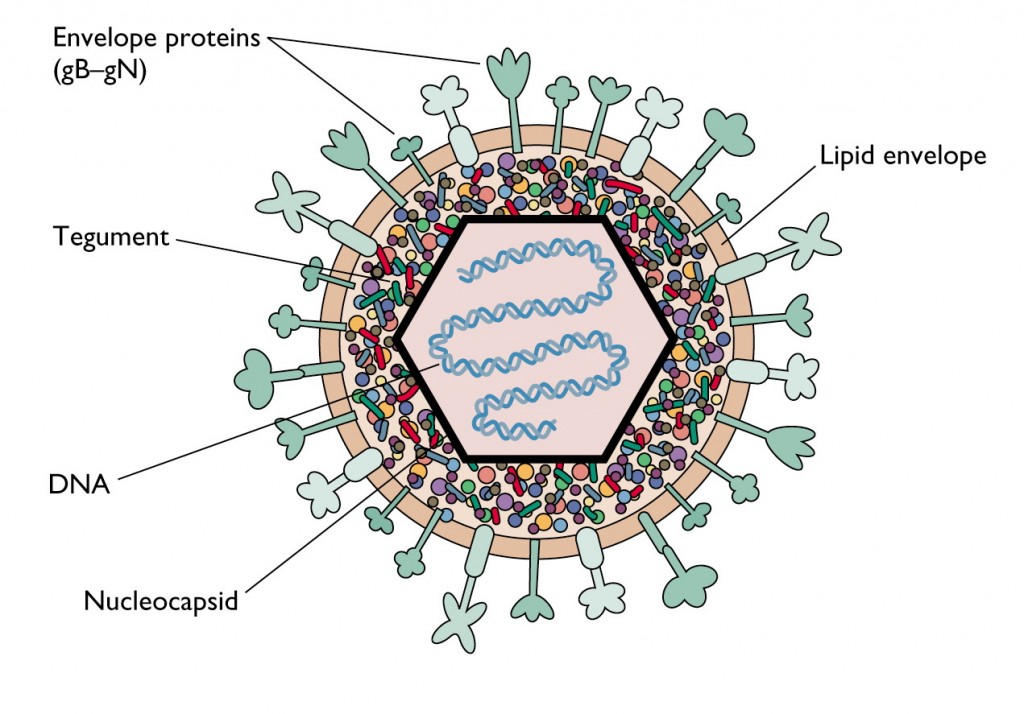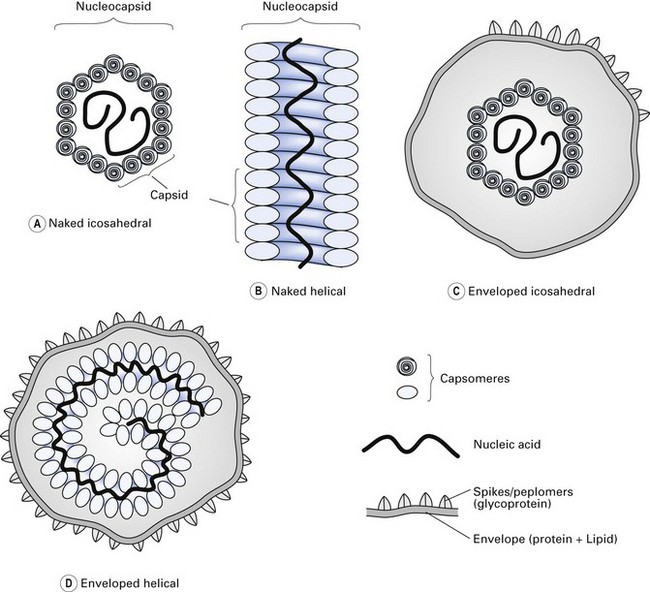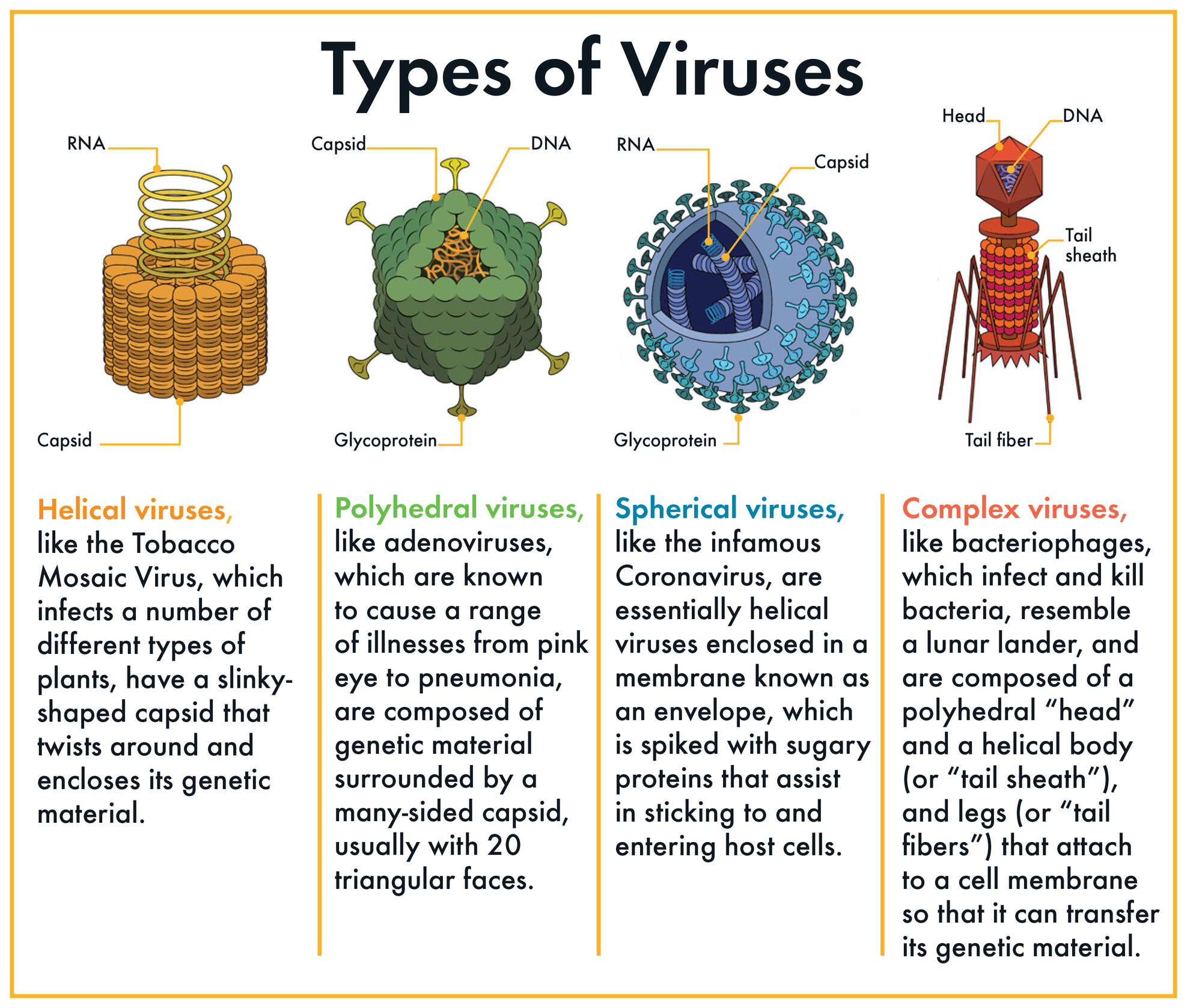Viruses – Structure and Classification Study Guide
Introduction
A virus is a submicroscopic and small microscopic agent that replicates inside the human body’s living cells only. It cannot replicate alone. They are essentially made up of DNA or RNA that is surrounded by a protein coat. They use the components of a host cell and make copies of themselves. They often cause harm to these host cells in the process and eventually kill them. They also infect all life forms, from human beings to animals to plants and even bacteria and other microorganisms.
In the absence of a host cell, the viruses cannot generally function and reproduce. They cannot synthesize their proteins due to the absence of ribosomes. They cannot even store their own energy in the form of ATP ( Adenosine Triphosphate ); instead, they derive their energy from the host cells.
All viruses contain either DNA or RNA nucleic acid, and a protein coat encases the nucleic acid called the capsid. Along with this, some viruses are even covered with a coat of fats and proteins. When it is infected, a particle called the virion is present outside the cell. In some viruses, an envelope is made up of a phospholipid layer, and glycoprotein is present outside the capsid.
The basic structural components of any virus are:
1. Genome or Nucleic acid: This part contains DNA or RNA. A virus that contains the DNA protein is called a DNA Virus, and that which contains RNA is called an RNA virus. For example, Reovirus is an RNA virus containing an RNA genome, and Papovavirus is a DNA virus.
2. Capsid: It is the protective protein coat. It comprises many capsomeres, which are arranged tightly together in repeating patterns. It is an impenetrable shell. Its main function is to help introduce a viral genome into the host cell during infection. The structure of a capsid is what gives symmetry to the virus. The structures can be cubical, helical, complex, or binal.
- Cubical symmetry: Also called icosahedral symmetry. There are 12 vertices, 30 edges, and 20 sides in this type. Each side is an equilateral triangle. It is one of the most stable structures and found in human pathogens, for example, Adenovirus, herpes virus, etc
- Helical symmetry: Also called spiral symmetry. The capsomere and nucleic acid are intertwined together to form a spiral tube. Most of these viruses are enveloped, and all of them contain RNA proteins. The most typical virus of this type is the Tobacco mosaic virus (TMV).
- Complex symmetry: They do not have any 1 particular type of virus structure, and most of them are a combination of the helical and cubical structures. for example, the pox virus
- Binal symmetry: This is a type of complex symmetry where the virus structures have heads and tails. Some of the most complicated structures are that of the bacteriophages that possess an icosahedral head as well as a helical tail. These are also named T1, T2, T5, etc.
3. Envelope: Some viruses even contain an envelope surrounding the nucleocapsid. It is a layer of lipoprotein and glycoprotein, and the envelope results from the budding process from the host cell. The proteins can also project out as telomeres such as neuraminidase and haemagglutinin involved in binding virus to the host cells.
4. Enzymes: These play a central role in the infection process. For example, some viruses like bacteriophages contain enzymes like lysozyme that make a small hole in the bacterial cell that allows nucleic acid to enter.
Classification of viruses:
According to Baltimore, viruses are classified into VII groups based on the method of replication, they are:
- Group I: These viruses contain double-stranded DNA in their genome. For example, Adenovirus, Poxvirus, and Herpesviruses.
- Group II: These viruses have single-stranded DNA in their genome. For example Parvoviruses
- Group III: They use double-stranded RNA as their genome. The 2 strands separate, and one of them is used as a template for generating mRNA. For example Reoviruses
- Group IV: They have single-stranded RNA in their genome with a positive sense of polarity. Positive polarity means that the genomic RNA can serve directly as mRNA molecules. For example, Common cold
- Group V: They have single-stranded RNA as their genome with a negative sense of polarity. Negative polarity means that the sequence will be complementary to the mRNA strands. For example Rabies virus
- Group VI: They have two copies of single-stranded genomes that are converted using an enzyme called reverse transcriptase, and the result is double-stranded DNA. For example, Retroviruses.
- Group VII: These have partial double-stranded genomes and make single-stranded DNA intermediaries that act as mRNA. For example, Hepadnaviruses.
Conclusion:
- Hence, viruses infectious particles that are very minute and can be observed mostly through electron microscopy.
- Every virus particle is classified by the type of nucleic acids they contain- DNA and RNA and whether they have single-stranded or double-stranded DNA and RNA structures.
FAQs:
1. What are the three structures of a virus?
Based on symmetry, the three structures of a virus are Helical, Complex and Cubical structures.
2. What are the four main parts of a virus?
The four main parts of a virus are Genome, Capsid, Envelope, and Enzymes.
3. What are the five characteristics of a virus?
The 5 characteristics of a virus are:
- Viruses are metabolically inert and inefficient
- They range in sizes 20nm to 250nm
- They are non – cellular
- They are nucleoprotein filterable agents.
- They multiply inside the living cells using the host cells.
4. What are the four shapes of viruses?
5. What best describes a virus?
A virus is an organism that is smaller than a bacterium that cannot grow or reproduce by itself but uses the host cell as an agent.
We hope you enjoyed studying this lesson and learned something cool about Viruses – Structure and Classification! Join our Discord community to get any questions you may have answered and to engage with other students just like you! Don’t forget to download our App to experience our fun, VR classrooms – we promise, it makes studying much more fun! 😎
Sources:
- Virus Structurehttps://flexbooks.ck12.org/cbook/ck-12-biology-flexbook-2.0/section/7.10/primary/lesson/virus-structures-bio/ Accessed on 7 Dec 2021
- Structure and Classification of Viruseshttps://www.ncbi.nlm.nih.gov/books/NBK8174/ Accessed on 7 Dec 2021
- Virus structure and classificationhttps://www.khanacademy.org/test-prep/mcat/cells/viruses/v/virus-structure-and-classification Accessed on 7 Dec 2021





